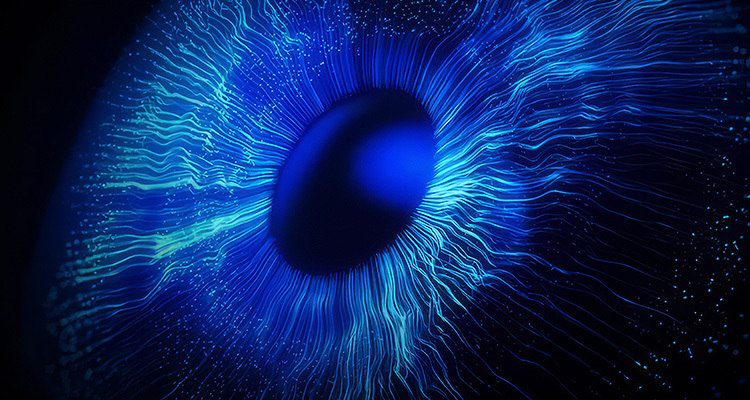The role of AI in shaping tomorrow’s industry.
Remarkable changes are happening in the manufacturing industry. The global pandemic, and subsequent macroeconomic volatility, exposed weaknesses across the manufacturing ecosystem. In an ever-changing landscape, manufacturers have been forced to realign and reimagine their supply chains in real-time. Coupled with increasing consumer demands, a growing skills gap and the unprecedented pace of technology change, these challenges leave manufacturers feeling increasingly uncertain about the future.
And yet, despite these challenges – or perhaps because of them – manufacturing continues to grow globally. Out of constraints comes innovation.
The past few years have made one thing clear: technological advancements, such as AI, play a key role in shaping the industry’s future. Of the leaders surveyed in Autodesk’s upcoming 2024 State of Design and Make special report on AI, 66 percent agree that in two to three years, AI will be essential. Manufacturers can’t afford to fall behind; they must embrace AI to enhance their capabilities and get ahead of their competitors.

Unifying workflows with smart automation:
AI’s integration into manufacturing processes brings forward the era of intelligent automation. Contrary to the fear that AI will replace human jobs, the future of manufacturing is more likely to involve harmonious collaboration between humans and machines. Traditional manufacturing systems are often limited by manual inputs and require extensive intervention. This is reliant upon multiple tools throughout different phases of product development, necessitating multiple handoffs from one team to another. Cloud-based AI, however, introduces a level of automation that can transform the way organizations design and make by removing barriers caused by disconnected tools that inhibit the flow of information across teams. Leveraging automation in this way will help improve the way organizations work together – streamlining workflows across every phase of the entire product development and manufacturing lifecycle, so that changes made in one workflow are instantly reflected everywhere. This helps enhance productivity across a team, and also ensures version control across multiple different workflows.
Collaborative innovation: boosting productivity & creativity
Machines powered by AI can also analyze vast amounts of data in real-time and enhance the work of industrial designers – enabling technology to make split-second decisions and create 3D concepts within milliseconds. This precision is particularly crucial in the manufacturing industry, where accuracy and quality control are paramount. Nowadays, with the assistance of AI, manufacturers can achieve unprecedented levels of product consistency and reduce the margin of error to near-zero.
These advancements can also handle and eliminate repetitive, data-driven tasks, freeing up human workers for the higher-value, creative and complex aspects of design and make. Efficient human-machine collaboration can lead to innovative problem-solving and foster a work environment where human intuition complements AI’s advanced analytical capabilities. This synergy is expected to in turn break down siloed workforces and result in a more agile and responsive manufacturing industry.
Streamlining supply chains with predictive maintenance
Moreover, another transformative quality of AI in manufacturing is its ability to implement predictive maintenance strategies. Traditional practices are often reactive, leading to unexpected downtimes and increased costs. AI, on the other hand, can predict when a machine is likely to fail based on sensor inputs, machine learning algorithms, and historical data. By implementing predictive maintenance, manufacturers can pre-emptively schedule repairs and replacements at optimal times, preventing costly breakdowns and minimizing production disruptions and downtime. Importantly, this not only improves the overall efficiency of manufacturing processes but also extends the lifespan of machinery, resulting in substantial cost savings.
Leveraging generative design for scalable customization
AI-driven adaptive manufacturing is positioned to usher in a new era of customization at scale. Previously, mass production methods have limited the degree of customization that manufacturers can offer. However, new generative AI capabilities such as automated drawings enable conceptual design exploration, with 3D models that can be rapidly created in milliseconds and edited in real-time.
Here, the technology pulls from a company’s library of past work to rapidly generate new concepts that build on existing design styles and guidelines. This means machines can provide intelligent assistance that adapts to changing parameters, produces customized products efficiently, and allows customers to imagine and explore freely. At the same time, industrial designers can spend more time understanding their users and their design-relevant challenges, and less time editing thousands of sketches or renderings on a computer screen.
AI is the future of design and make – it can not only reduce non-productive work and significantly boost efficiency across the entire team at scale, but it also gives manufacturers the tools to become even more creative and innovative. With the volatile macroeconomic conditions causing increasing uncertainty across the industry, embracing AI is not merely an option, but a necessity for manufacturers to stay competitive.
By Asif Moghal
Asif Moghal is Director of Strategic Business Development – Design and Manufacturing, Autodesk. Autodesk is a cloud-based software platform for the architecture, engineering, construction, product design and manufacturing, media and entertainment industries to design and make better buildings and homes. From the buildings we live and work in, to the cars we drive and the bridges we drive over, Autodesk’s Design and Make Platform unlocks the power of data to accelerate insights and automate processes, empowering customers with the technology to deliver better building design outcomes.
